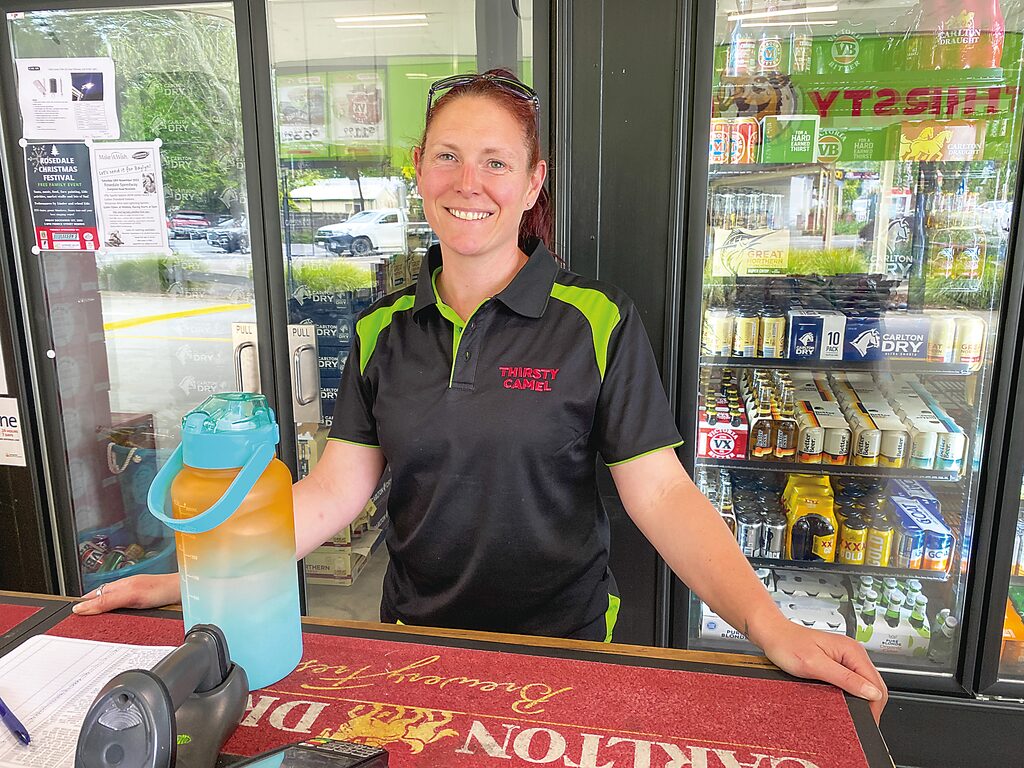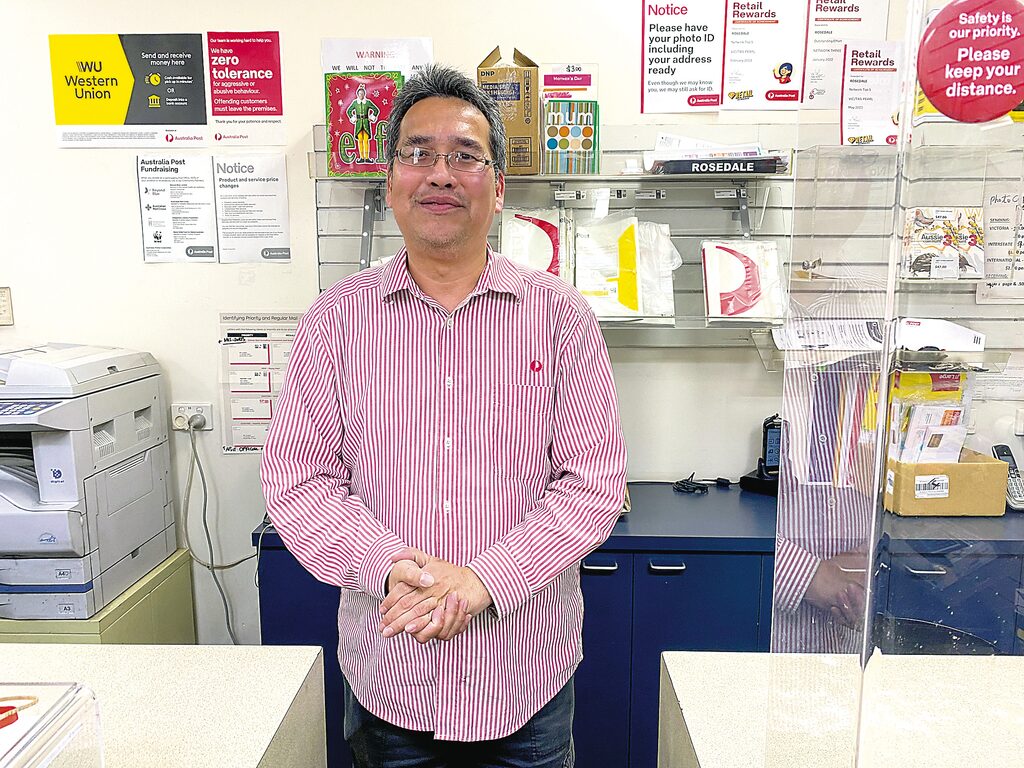By STEFAN BRADLEY
SEVERAL Rosedale residents, businesses, and those who often drive through the town have welcomed the new 50km/h speed limit through Prince Street since it was introduced last September.
Sue Coppock, the former owner of Little Fox Collectables on Prince St, had pursued a reduction to the previous 60km/h speed limit in the town for years.
Rosedale resident, Jodie Hornibrook set up a petition in January 2022, and Member for Gippsland South, Danny O’Brien also pushed the issue.
While Ms Coppock says she now feels safer on a road she drives through most days, she had hoped for a dynamic variable speed limit that would reduce the speed even lower during busier times. She also thinks the radius of the new limit is too large.
“Ideally, we would have liked … those round digital signs that change so … by six o’clock, it would change back to 60 kilometres per hour,” Mrs Coppock said.
“I suppose 50km/h is better than 60km/h. We were hoping for 40km/h and only through the actual shopping section of the town (on Prince St), not the whole stretch of the town.
“Most of us feel (the 50km/h zone) is too long.”
Mrs Coppock says that for those heading towards Sale, the 50km/h zone should begin at the BP petrol station and end at the roundabout.
The newly-installed speed limit begins further up Princes Highway for those Sale-bound.
Instead, it’s currently 50km/h at all times, and Mrs Coppock speculates that speed is to conform with nearby towns. Other Rosedale residents said the speed was even lower at 40km/h in other towns.
Danni, who is a committee member of the Rosedale Chamber of Commerce (who also pushed for a lowered speed limit), an employee at Thirsty Camel Rosedale, and owner of Del Jardin Nursey, said the 50km/h was great for the community.
“I think it needs to be policed a little bit more. Because there are still people going through the town doing more than 50,” she said.

A spokesperson for the Department of Justice and Community Safety (DJCS) confirmed there were currently no fixed road safety cameras in the Rosedale area. However, there is an active mobile camera site positioned at Prince St, Rosedale.
Locations of Victoria’s mobile and fixed camera systems are determined based on a range of factors, including crash history, engineering and environmental suitability and existing enforcement options.
The DJCS spokesperson said they received no requests from the public to have a fixed road safety camera at Rosedale.
The Fixed Camera Site Selection Committee (the FCSSC) determines the placement of fixed road safety cameras.
This reporter observed a number of vehicles going 50km/h, but it was clear that others were still driving above the speed limit.
Toongabbie resident Charlotte Jones, who works at Café 3847 & Co. on Prince St, said the speed limit change benefited pedestrians.
“There’s a set of traffic lights (near the café), and 60km/h is a bit too much from the roundabout,” she said.
“There’s a few (speeding), but it’s their problem if they get caught.”

Ms Jones hopes that the lower speed will lead to more people stopping in Rosedale.
IGA Rosedale Plus Liquor retail worker, Vanessa said that Prince St could be dangerous because vehicles would drive through the red lights, so she’s happy that there’s been a speed reduction.
“You’ll be doing 50km/h, and (vehicles) start overtaking you, flashing their lights or tooting at you,” Vanessa said.
Vanessa also agreed the 50km/h speed area should be reduced to a smaller radius.
Joe from Rosedale Australia Post said he believed the local residents were happy about the change, making it easier and safer for cars to get in and out of parking.
“You would hear a lot of impatient people passing by,” he said.

Mrs Coppock also said when running her shop during the old speed limit, she’d hear cars and trucks slamming their breaks daily.
“You just cringe waiting for an accident because they just speed so fast from that roundabout, even down to the pedestrian traffic lights,” Mrs Coppock said.
“And there were a lot of people who signed the petition … say ‘oh, yes, I’ve had my mirror wiped off’, and someone nearly got their door broken off.
“Just a lot of near misses that have happened. The road is very narrow, and big semi-trailers come down there at the same time you’re getting out of your car.”
One resident told the Latrobe Valley Express they didn’t feel any safer with the change.
“Even when (the speed limit) was 60, the vehicles didn’t do 60, and sometimes they don’t even stop at the lights – they just keep going,” they said.
Multiple people said the new speed was beneficial for the vulnerable, children and elderly crossing the road or exiting their car.
The public can nominate a camera site via the Cameras Save Lives website (vic.gov.au/suggest-camera-location). The FCSSC then assesses nominations.
The FCSSC assesses potential intersection sites for camera enforcement against statistics on crash casualties, data on driver behaviour, technical and site suitability information, and road capacity information.
Victoria Police chairs the FCSSC, which includes representatives from the Department of Transport and Planning and the Department of Justice and Community Safety.
The Department of Transport and Planning is responsible for speed limit and traffic volume-related matters.
“Victoria’s road safety camera program plays a critical role in changing driver behaviour and saving lives,” a DJCS spokesperson said.
“Road safety cameras are proven to be one of the most effective ways to save lives and get motorists to slow down.
“The facts speak for themselves – there is, on average, a 47 per cent reduction in crashes resulting in death or injury on stretches of road where a camera is installed.
“Every dollar received from road safety cameras goes to the Better Roads Victoria Trust, where it is spent on road projects such as road restoration, road surface replacement, bridge strengthening and other road safety improvements.”











